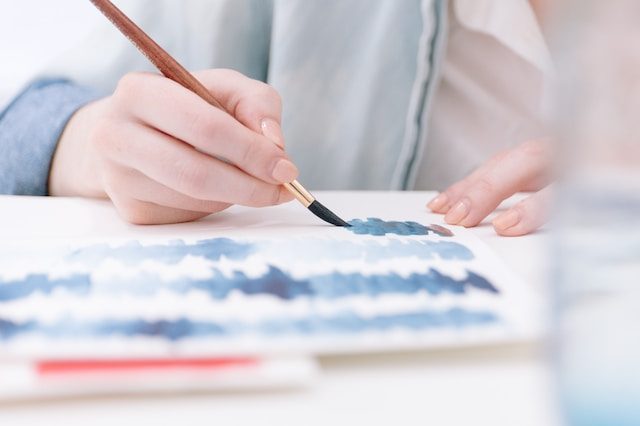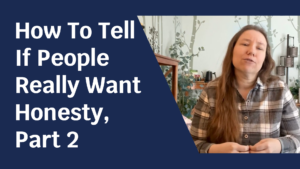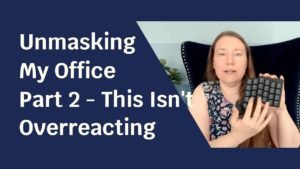Making mistakes
This is the second installment of this series on things I’m re-learning since I’ve started doing art again. Find the first installment here.
Last time I wrote about times in life, through the lens of making art, when mistakes don’t turn out to be quite as permanent or irrevocable as my anxiety tries to convince me that they are. Sometimes, however, the outcome is much less desirable.
Sometimes it gets worse
Sometimes when painting I make an accidental mark, or an intentional mark with an outcome I didn’t like after all, and the more I do to fix it, the more obvious the mistake is and the worse it looks. At some point I have to remind myself that not all mistakes can be covered up or fixed. What’s left is to go with it.
Some of those effects can be mitigated or downplayed, and it may not be as bad as it originally was (or as I thought it might be), but it’s still going to be a part of life.
I’m learning to incorporate these mistakes into my painting, so that it becomes a part of the whole. Even though it’s visible, even though it’s not something I like.
I might be able to downplay it or semi-hide it, pulling attention elsewhere, or make it part of a new object that I add in to disguise it, but it’s still there. And anyone who looks at it will see it, whether they recognize it as a mistake or not. In this case, I’m simply mitigating the effects.
In life, there are things that can’t be rendered un-noticeable, that will echo into the future, that will remain relevant and effect me or other people for a long time to come. Some of those effects can be mitigated or downplayed, and it may not be as bad as it originally was (or as I thought it might be), but it’s still going to be a part of life.
Dealing with the marks
I’m learning to incorporate it, rather than trying endlessly, and fruitlessly, to cast it out, which is what I used to do. Which (of course) didn’t work, because you can’t actually undo things, even when you can make it so that they have no further effects. There’s no undo button in life, much to my continuing disappointment. But I have tried (oh, how hard I have tried) to pretend that certain things didn’t exist. To compartmentalize them and forget about them, or not deal with them.
I’ve hoped, and thought, and behaved as if not dealing with them would mean they weren’t a part of me. As if it would make them less real. But, wow, that took so much energy.
I realize now there was a part of me that was afraid that if I dealt with those painful parts of my history, it would mean I would end up thinking about them all the time, which is the last thing I wanted. But now that I’ve done it, I know that it really doesn’t work that way.
The healing process
Healing (at least in my experience) means integrating the feelings of grief and anger and the pain of it; integrating it fully, but usually quite briefly. It’s actually not as overwhelming and all-consuming as I thought it would be.
I might get sad sometimes, or feel regret, or a little bit of the pain, but it’s not so all consuming.
When I went through the healing process for each of these painful things, I thought about them a fair amount for a while, but in different ways than before processing them. Then in a surprisingly short time (from hours to weeks, depending on the thing), other parts of my life pulled my attention, and though the painful things were still there, they faded more into the background as just a part of the picture of my life. I still think about them sometimes, but they don’t affect me as intensely, or in the same ways, as they used to. I might get sad sometimes, or feel regret, or a little bit of the pain, but it’s not so all consuming. It’s simply one part of the whole.
And when I choose to tell other people about them, they can see that they are there, and they can see the effects of those experiences on my life, but it’s no longer the main focus. And I can talk about them. Without shutting down or later ending up in a fetal position under layers of blankets in my bed.
How processing it hurts less
I find this interesting because I used to think that by pushing it down I was taking the focus away from the painful stuff, but in order to do that, my brain and body actually had to use a lot of energy and focus to keep the focus away, if that makes sense.
It’s like trying to not think about a pink elephant. In order to not think about a pink elephant, you have to devote a lot of resources in your brain to both thinking about it and not thinking about it, because you have to be aware, at some level, of what it is that you’re not thinking about, so you can make sure it’s not coming into conscious awareness.
But it not being conscious doesn’t mean that it’s not actively occupying resources. In fact, it’s commandeering a lot of resources. I think that has a lot to do with my brain fog during years when I was most actively trying to push things down, and contributed to my burnouts, because it takes a lot of energy to do all of this.
Of course I didn’t want to process
It doesn’t surprise me that it took me more than 30 years to deal with some of my painful stuff. There are good reasons why I didn’t want to think about those old wounds.
And there’s a part of me that rebelled against the very idea that bad things happened at all. I think it somehow believed that if I didn’t deal with it, it would make it go away, or not be relevant, or like it didn’t happen.
I think it somehow believed that if I didn’t deal with it, it would make it go away, or not be relevant, or like it didn’t happen.
This isn’t just me, I think this is actually quite common. The long-standing popularity in folklore, fantasy, and science fiction of stories in which we can undo actions, go back in time, or change things that happened, speaks to our deep-seated, human struggle with the linear nature of time, and our own limited awareness of the consequences of actions before the fact.
How many tragedies could have been prevented if we only knew how bad certain actions would be? But we don’t. Hence we have regret and guilt.
And when you weren’t the one doing the hurtful thing, when you’re the victim of someone else’s linear choices, it creates anxiety, fear, and anger.
And combining those: when people act in ways that some part of them later regrets, but other parts of them can’t deal with that, so they push the blame onto the victim, it creates shame (in their victim). Tell me where I’m wrong?
Last thoughts
Sadly, there isn’t an undo button in life, and I can’t make things un-happen. But I’m learning to process and integrate those things so that they don’t consume all of my thoughts or resources. So they become one part of the much larger painting of my life.




